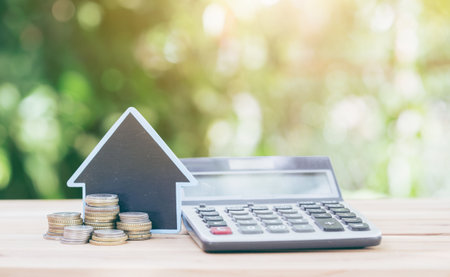Understanding Bonus Depreciation and Section 179
For real estate investors navigating the U.S. tax landscape, maximizing deductions is key to optimizing returns. Two of the most significant tax strategies available are Bonus Depreciation and Section 179 expensing. While both provisions allow investors to write off the cost of property or equipment more quickly than standard depreciation schedules, each operates under its own set of rules and offers distinct advantages. Bonus Depreciation enables investors to deduct a large percentage—sometimes up to 100%—of eligible property costs in the first year it’s placed in service, rather than depreciating the asset over several years. Section 179, on the other hand, permits taxpayers to immediately expense qualifying business property up to an annual limit, which can be especially useful for smaller-scale acquisitions or improvements. Understanding how these two mechanisms work—and when each applies—is crucial for real estate professionals aiming to reduce taxable income, increase cash flow, and make strategic investment decisions within the framework of U.S. tax law.
Key Differences: Eligibility and Limitations
When it comes to maximizing tax benefits, real estate investors must understand the distinct eligibility requirements and limitations of Bonus Depreciation and Section 179. While both incentives allow you to accelerate the depreciation of qualifying assets, the details set them apart in ways that can dramatically impact your tax strategy.
Which Assets Qualify?
| Asset Type | Bonus Depreciation | Section 179 |
|---|---|---|
| New Property | Eligible (for most tangible property with a recovery period of 20 years or less) | Eligible (if used for business and not structural) |
| Used Property | Eligible (after Tax Cuts and Jobs Act of 2017) | Eligible (must be new to investor, but can be used equipment) |
| Real Property Improvements | Certain improvements like Qualified Improvement Property (QIP) are eligible | Certain non-structural improvements are eligible, such as HVAC, alarms, roofs, etc. |
| Main Building Structure | Not eligible | Not eligible |
Annual Limits and Timing
| Bonus Depreciation | Section 179 | |
|---|---|---|
| Deduction Limit per Year | No dollar limit (can take 100% deduction for qualifying assets placed in service before phasedown dates) | $1,220,000 in 2024; phases out dollar-for-dollar after $3,050,000 in asset purchases* |
| Timing Requirement | Assets must be placed in service during the tax year claimed; can create a net operating loss (NOL) | Assets must be placed in service during the tax year claimed; deduction limited to taxable income from active trades/businesses (no NOL creation) |
| Status of Taxpayer/Investor Qualification | No requirement to be profitable; available to all businesses including rental real estate enterprises meeting IRS criteria as a trade/business | Only available if taxpayer has sufficient taxable business income; not available for certain trusts or estates |
| Phase-out Schedule (Bonus Depreciation) | 100% through 2022, then phased down by 20% each year until eliminated after 2026 unless extended by Congress | N/A |
*2024 IRS Section 179 limits. These amounts are indexed for inflation and may change in future years.
The Fine Print for Real Estate Investors
The IRS recognizes rental real estate as a trade or business for these purposes only if you meet certain requirements—such as “material participation” or aggregation elections. Section 179 is typically more restrictive for passive investors because it’s tied to active income, while bonus depreciation applies more broadly. Always check whether your investment activity qualifies under current IRS rules before making large purchases or claiming accelerated deductions.
In summary: Bonus depreciation offers broader eligibility with fewer annual caps but is temporary and subject to phase-out. Section 179 offers immediate write-offs within strict annual limits and income requirements. Choosing the right approach depends on your portfolio composition, business structure, and overall tax situation.

3. Benefits and Drawbacks for Real Estate Investors
When comparing bonus depreciation and Section 179 expensing, real estate investors must weigh the unique advantages and potential limitations each method brings to their investment strategy. Both approaches can provide substantial tax relief, but the impact on cash flow, asset planning, and long-term tax liability can differ significantly.
Bonus Depreciation: Pros and Cons
Pros
- Immediate Tax Savings: Investors can deduct a large portion—sometimes up to 100%—of qualifying property costs in the first year, freeing up capital for reinvestment or operational needs.
- No Annual Dollar Limits: Unlike Section 179, there is no cap on the total amount of bonus depreciation that can be claimed in a single tax year, making it attractive for larger-scale acquisitions or renovations.
- Flexibility: Bonus depreciation applies to both new and used property (with certain restrictions), expanding eligibility for more types of real estate investments.
Cons
- Recapture Risk: If you sell or dispose of an asset before the end of its useful life, the IRS may require you to “recapture” part of the previously claimed deduction as ordinary income, potentially increasing your future tax liability.
- Potential for Lower Future Deductions: By front-loading deductions, you reduce your basis in the asset quickly, which means fewer write-offs in subsequent years—and possibly higher taxable income down the road.
Section 179 Expensing: Pros and Cons
Pros
- Tailored Deductions: Section 179 allows investors to choose how much to expense in a given year (up to annual limits), offering flexibility to manage taxable income strategically.
- Simplicity for Smaller Investments: For investors acquiring less costly assets or operating on a smaller scale, Section 179’s straightforward rules can streamline tax planning and compliance.
Cons
- Annual Limits: The deduction is capped annually ($1,220,000 for 2024), with phase-outs beginning at $3,050,000 in qualifying purchases—limiting its value for large-scale portfolios or high-dollar acquisitions.
- Tighter Eligibility Criteria: Not all real estate-related assets qualify; improvements like HVAC or security systems are eligible, but most buildings and land are not. This narrows its applicability compared to bonus depreciation.
Strategic Considerations
The choice between bonus depreciation and Section 179 should be guided by your investment goals, anticipated cash flow needs, and projected growth. If maximizing immediate liquidity is essential—especially when scaling quickly—bonus depreciation offers unmatched upfront benefits. However, if you prefer a measured approach to offsetting income over several years while maintaining more predictable tax obligations, Section 179 may be preferable. Consult with a knowledgeable CPA or real estate tax advisor to align your decision with both current market conditions and your long-term business objectives.
4. Recent Legislative Changes and the U.S. Market
The landscape for real estate investors leveraging bonus depreciation and Section 179 has shifted significantly in recent years due to legislative reforms and updated IRS guidance. Understanding these changes is crucial for making informed decisions about property acquisition and improvements.
Tax Cuts and Jobs Act (TCJA) Impact
The Tax Cuts and Jobs Act of 2017 (TCJA) was a game changer for both bonus depreciation and Section 179 expensing. The TCJA increased bonus depreciation to 100% for qualifying assets placed in service after September 27, 2017, through the end of 2022. However, this benefit is now phasing down—dropping to 80% in 2023, 60% in 2024, and further declining each year until it is eliminated unless Congress acts.
Section 179 Expensing Adjustments
For Section 179, the TCJA also raised the maximum deduction limit and phase-out threshold, making it more accessible for small- to mid-size real estate investors. In tax year 2024, the maximum deduction is $1,220,000 with a phase-out beginning at $3,050,000 in equipment purchases. Importantly, Section 179 now includes certain nonresidential real property improvements—such as roofs, HVAC systems, fire alarms, and security systems—which were previously excluded.
Comparative Overview: Bonus Depreciation vs. Section 179 (Post-TCJA)
| Provision | Bonus Depreciation | Section 179 |
|---|---|---|
| Deduction Rate (2024) | 60% | Up to $1,220,000 |
| Eligible Property | New & used tangible property with <20-year class life | Tangible personal property & select building improvements |
| Phase-Out | Yes (annual reduction through 2026) | Yes (after $3,050,000 spent) |
| Business Income Limitation | No | Yes (limited by taxable income) |
| Carryforward Rules | N/A | Unused amounts can be carried forward |
Evolving IRS Guidance and Market Response
The IRS has provided additional clarity on what qualifies as eligible property under both provisions—particularly regarding cost segregation studies that allow real estate investors to break out personal property components from buildings for accelerated depreciation. This evolving guidance encourages more granular asset analysis during acquisitions or renovations.
Strategic Considerations in the Current U.S. Market Environment
Given the phase-down of bonus depreciation and expanded access to Section 179 deductions for certain property types, real estate investors must stay nimble. It’s important to time purchases or improvements strategically and consult with tax professionals familiar with current IRS rules to maximize after-tax returns. As policymakers debate further tax reform amid shifting economic priorities, monitoring legislative developments remains vital for optimizing investment outcomes.
5. Practical Scenarios: How Investors Apply Each Method
For U.S.-based real estate investors, understanding how and when to apply bonus depreciation versus Section 179 is crucial for maximizing tax efficiency. Let’s break down some practical use cases to illustrate how these options play out in the field.
Residential Rental Properties
Imagine an investor purchases a single-family rental home and spends $40,000 upgrading appliances, HVAC systems, and installing new carpeting. Here, Section 179 may be limited because residential rental property generally does not qualify except for certain tangible personal property like appliances or furniture. However, if these improvements fall under qualified improvement property (QIP), bonus depreciation can allow the investor to write off 80% of the cost in the first year (as of tax year 2023), with no income limitation. This rapid expensing accelerates cash flow and reduces taxable income—an attractive strategy for landlords seeking immediate benefits.
Commercial Office Buildings
Now consider an investor who acquires a small office building and spends $150,000 renovating interiors—lighting, flooring, and office equipment. In this scenario, Section 179 could be used to immediately expense eligible equipment up to the annual limit ($1,160,000 for 2023), provided the total investment stays below the phase-out threshold ($2,890,000). For larger improvements classified as QIP, bonus depreciation becomes valuable since it covers bigger expenditures without regard to annual caps. Many commercial investors blend both methods: Section 179 for smaller-ticket items and bonus depreciation for capital-intensive upgrades.
Retail Improvements
A retail strip mall owner replaces signage, installs new security systems, and upgrades parking lot lighting. Security systems and signage often qualify for Section 179 expensing, while broader interior renovations may be eligible for bonus depreciation. Decision criteria here include evaluating whether the investor’s total spending exceeds Section 179 limits and determining the urgency of offsetting taxable income in a single year versus spreading deductions over time.
Decision-Making Criteria
- Property Type: Commercial properties offer more flexibility; residential rentals face restrictions under Section 179.
- Cost of Improvements: Small-scale updates fit well with Section 179; large renovations lean toward bonus depreciation.
- Taxable Income: High-income years favor aggressive use of both deductions; low-income years may warrant deferring benefits.
Key Takeaway
The optimal approach is often a hybrid—leveraging Section 179 for immediate expensing on qualifying items while using bonus depreciation for major projects or when exceeding annual deduction thresholds. Successful investors consult with tax professionals to ensure compliance and maximize after-tax returns based on their unique deal profile and long-term strategy.
6. Strategic Considerations: Choosing the Right Depreciation Tool
When it comes to maximizing tax benefits through asset depreciation, U.S. real estate investors must carefully assess which approach—bonus depreciation or Section 179 expensing—best aligns with their investment goals and operational realities. The decision is far from one-size-fits-all, as both options come with unique eligibility requirements, limitations, and strategic implications. Here are the primary factors investors and their advisers should weigh:
Nature and Size of Investment
The type of property and the scale of your acquisitions play a pivotal role. Bonus depreciation is particularly advantageous for large-scale purchases or when acquiring multiple assets at once, since it does not impose an annual deduction cap. In contrast, Section 179 is ideal for smaller investments due to its annual dollar limitation and phase-out thresholds that can restrict benefit for larger portfolios.
Taxable Income Profile
Your current and projected taxable income should shape your choice. Section 179 deductions are limited by the amount of active business income, making them less useful if your operations generate modest profits or losses in a given year. Bonus depreciation, on the other hand, can create or increase net operating losses that may be carried forward (or back, depending on current tax law), offering greater flexibility for long-term tax planning.
Asset Use and Classification
Not all assets qualify equally under both provisions. Section 179 applies primarily to tangible personal property actively used in a trade or business but generally excludes most rental real estate unless specific exceptions apply. Bonus depreciation has broader applicability to qualified improvement property and certain used assets acquired after September 27, 2017—an important distinction for investors renovating or upgrading existing holdings.
State Tax Implications
Federal rules are just one side of the equation; many states decouple from some or all bonus depreciation and Section 179 provisions. It’s essential to evaluate how state conformity (or lack thereof) could impact your overall tax position, especially if you own properties across multiple jurisdictions.
Long-Term Investment Strategy
Finally, consider how immediate expensing aligns with your broader investment timeline. Accelerating deductions can boost short-term cash flow but may reduce future depreciation shields and affect basis calculations upon sale. A thoughtful approach requires balancing today’s benefits against tomorrow’s tax consequences—an area where collaboration with experienced tax advisers is indispensable.
Ultimately, there is no universal answer; the optimal path depends on your unique circumstances and long-term objectives. By weighing these strategic considerations, real estate investors can tailor their depreciation strategy to maximize after-tax returns while staying compliant with evolving IRS guidelines.


